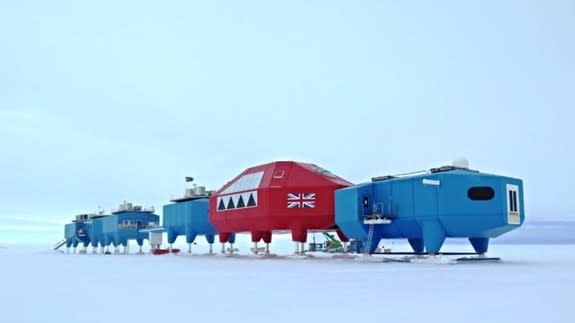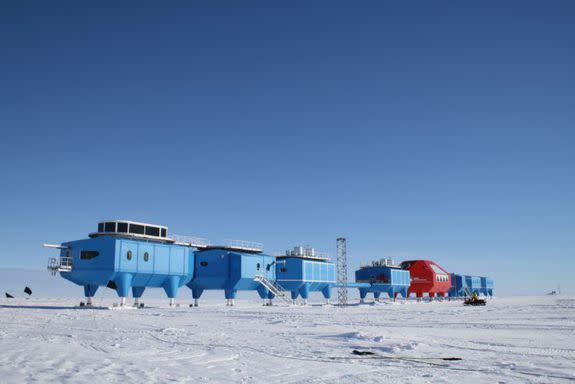A big Antarctic ice crack is forcing scientists to evacuate research station

Scientists stationed in East Antarctica are being forced to evacuate after another big ice crack appeared near their base.
The British Antarctic Survey (BAS) said it was making a highly unusual move and closing its Halley VI Research Station during Antarctica's winter season, which runs from March to November 2017.
Scientists will evacuate in March, the BAS said, due to concerns about the consequences of an ice crack known as the "Halloween crack."
SEE ALSO: Warm ocean water is melting East Antarctica's largest glacier
About 90 people are now stationed on the research platform located on the floating Brunt ice shelf, including 16 people who were scheduled to stay over winter to monitor scientific experiments, the U.K. science office said Monday in a news release.
While the scientists aren't immediately at risk, the BAS said there was "sufficient uncertainty" as to how safe the crew would be during the coming Antarctic winter. The office thus decided to shut down Halley VI as a "precautionary measure" and remove the crew before March.
"We want to do the right thing for our people," Captain Tim Stockings, director of operations for BAS, said in the press release.
"Bringing them home for winter is a prudent precaution given the changes that our glaciologists have seen in the ice shelf in recent months," he said.
Stockings added that the crew is working to "winterize" the station and leave it ready to be re-occupied as soon as possible after November.
The Halley VI research station, which gathers important weather and climate data, was already under threat before this latest ice crack appeared.
Since December, the U.K. office has been moving the base farther inland to protect it from a different expanding ice chasm. That crack threatens to cleave off the part of the ice where the facility sits and send the station adrift on an iceberg.

Image: british antarctic survey
The chasm was dormant for nearly four decades. But since it became active again in 2013, it has grown at a pace of about 1.7 kilometers, or 1 mile, per year, according to the BAS.
Scientists discovered the second crack on Oct. 31 last year — hence its nickname.
This crack sits about 17 kilometers, or 10.5 miles, north of the base's new location and stretches about 44 kilometers, or 27.3 miles, long.
Glaciologists have been monitoring the Halloween Crack's growth using GPS instruments, satellite imagery, ground-penetrating radar and on-site drone footage.

Image: British antarctic survey
They determined that "the recent changes to the Brunt Ice Shelf have not been seen before," the BAS said.
East Antarctica was once considered the most stable part of Antarctica. But the ice is showing increasing signs of melting, driven in part by human-caused climate change.
The U.K. office previously said the earlier ice chasm was part of a "natural" glaciological change, although it did not specify what might've caused the Halloween Crack.
